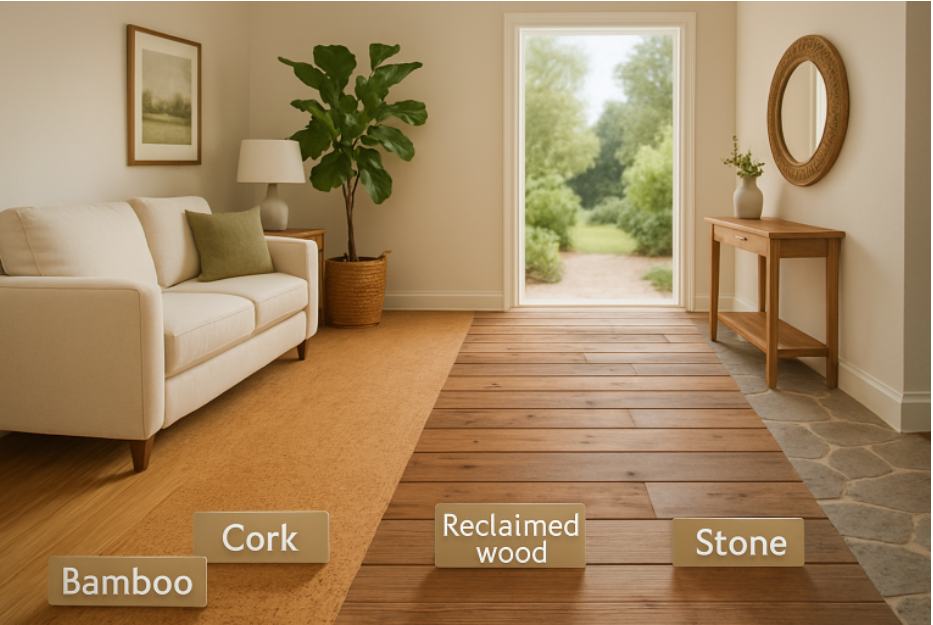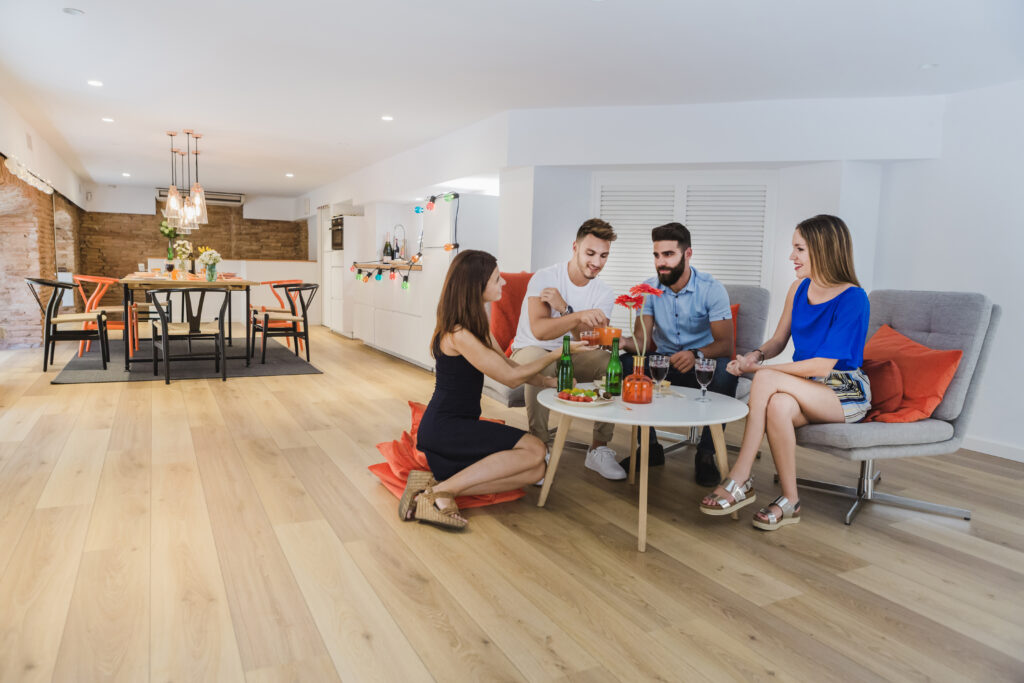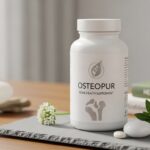Eco-friendly interior design has become a core value for many homeowners, blending environmental responsibility with style and practicality. As awareness of sustainability grows, the market for responsible flooring options expands, with homeowners and professionals exploring innovative materials that combine style and eco-friendliness. For those looking to upgrade their spaces, choosing eco-conscious flooring—such as that offered by SOEN—can have a profound impact on long-term sustainability, indoor air quality, and design longevity.
Opting for sustainable flooring doesn’t mean sacrificing appearance or durability. Many leading options combine beauty, strength, and ethical sourcing, aligning design with environmental care. While costs and installation vary, true value comes from floors that last, are healthy for your family, and minimize environmental impact. Whether you prefer a modern, warm, or unique style, eco-friendly options suit every taste. Green building goes beyond just energy-efficient lighting and recycled countertops; your floor is a key resource for conservation, pollution prevention, and supporting renewable industries. This guide reviews top sustainable flooring choices, highlighting their benefits, design potential, and suitability for different spaces.
Bamboo Flooring
Bamboo flooring’s reputation for sustainability is well earned; bamboo is a rapidly regenerative grass, able to reach harvest-ready maturity in as little as three to five years—much faster than traditional hardwoods. With its unique blend of hardness, moisture resistance, and contemporary visual appeal, strand-woven bamboo adapts beautifully to a wide range of design styles, from Scandinavian minimalism to bohemian chic. Not only is bamboo tough and easy to maintain, but it is also biodegradable, and when sourced responsibly, it supports ecosystems rather than depleting them. Certifications such as FSC (Forest Stewardship Council) labelling help ensure the bamboo is harvested ethically and with minimal environmental impact.
 Cork Flooring
Cork Flooring
Cork is a standout option for those prioritizing renewability and comfort. Unlike wood, cork is derived from the bark of cork oak trees, which regenerates after harvest, allowing a single tree to provide cork for decades. Its natural elasticity creates a soft, resilient surface that’s gentle on joints and noise-dampening—ideal for nurseries, home gyms, and living rooms. Innovations in finishing technologies now make cork more versatile, extending its life and enabling it to fit into both wet and dry interior environments. Cork is also resistant to pests and mildew, a valued benefit for allergy sufferers and those living in humid climates.
Reclaimed Wood
Salvaged from historic buildings, barns, or factories, reclaimed wood infuses new projects with a sense of history and craftsmanship. Every board carries a backstory, making this flooring an instant conversation starter while also preventing the need for harvesting new trees. With old-growth origins, reclaimed wood frequently delivers superior strength and character to new wood products. It’s a favourite among eco-conscious renovators who cherish the authenticity and minimal environmental footprint this option represents. It also supports the growing trend toward upcycling and preservation in home décor.
Linoleum
Created from natural materials—including linseed oil, wood flour, cork dust, and jute backing—linoleum is a classic solution with enduring green credentials. Unlike PVC-based vinyl, linoleum contains no harmful plastics or phthalates, making it an ideal choice for households seeking to minimize volatile organic compounds (VOCs) and promote healthy indoor air quality. Linoleum’s resistance to bacteria and static, paired with vivid colour and pattern options, enables the creation of custom floor concepts for nearly any space. Properly maintained, linoleum can last upwards of 40 years, making it a truly economical, waste-reducing investment.
Recycled Glass Tiles
For those attracted to bold colour and shine, recycled glass tiles create a captivating focal point while keeping glass bottles and window panes out of landfills. Most recycled glass tiles contain between 50% and 100% post-consumer or post-industrial content. Their non-porous surface is naturally resistant to stains and water absorption, making them suitable for high-traffic, high-moisture spaces such as kitchens and bathrooms. With minimal sealing required, glass tiles maintain their radiance and performance for years, offering one of the most eco-friendly ways to add character to modern interiors.
Polished Concrete
Increasingly popular in loft-style and minimalist homes, polished concrete is a material that reimagines the existing slab in many homes. Instead of additional coverings, polishing and sealing concrete repurposes and extends the life of the existing floor while minimizing waste. With its exceptional longevity and ease of maintenance, polished concrete offers a cost-effective solution that withstands the wear and tear of daily life. Its thermal mass helps regulate interior temperatures, contributing to the home’s overall energy efficiency. When paired with radiant heating, it can offer both comfort and lower energy usage.
Natural Stone
Natural stone, including varieties such as slate, travertine, and marble, delivers both elegance and durability. Stones are harvested directly from nature and minimally processed, ensuring a long product lifespan and reducing the need for replacement compared to synthetic choices. Sourcing locally available stone further reduces transportation emissions and carbon footprint. These floors can last for generations if maintained properly—a testament to the truly sustainable potential of stone for both contemporary and classic settings.
Wool Carpets
Wool carpet, a renewable and biodegradable material, is favoured by eco-conscious homeowners for its natural, chemical-free stain and odor resistance. It insulates, softens acoustics, and comforts homes, particularly bedrooms and living rooms. At the end of its life, it decomposes harmlessly, supporting sustainability over petroleum-based carpets. Choosing eco-friendly flooring promotes healthy, resilient homes and aligns with global sustainability efforts, making it a wise personal and ecological investment in beauty and innovation.
Conclusion
Eco-friendly flooring shows sustainability and style can coexist. Options like bamboo, cork, reclaimed wood, linoleum, and concrete each offer benefits for homeowners and the environment. Recycled glass, natural stone, and wool carpets enhance sustainable choices, balancing durability and aesthetics. Choosing these materials creates healthier, energy-efficient spaces and supports ecological preservation. Flooring is not just design but also an investment in comfort and sustainability.






